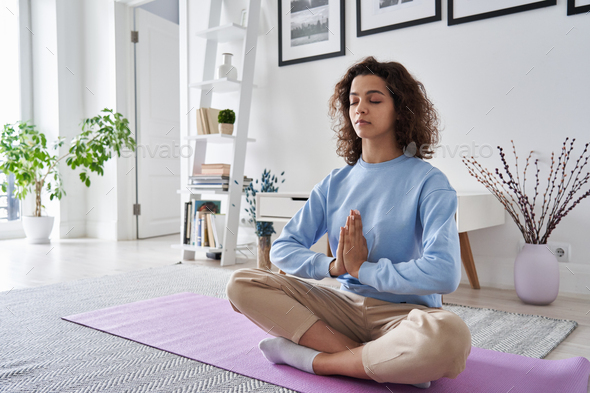How to Meditate? Checking Out Various Methods for a Calm Mind
How to Meditate? Checking Out Various Methods for a Calm Mind
Blog Article
How to Meditate: A Detailed Approach to Achieving Mindfulness and Calmness
Reflection offers as an effective tool for accomplishing mindfulness and emotional calmness in a hectic globe. By understanding the basic principles and techniques entailed in reflection, individuals can grow a practice that enhances their overall well-being.
Recognizing Meditation
Understanding meditation entails understanding its essential concepts and techniques, which function as the foundation for the technique. At its core, reflection is a mental workout focused on promoting leisure, developing interior power, and creating compassion and understanding. The practice encourages people to focus their interest, usually through methods such as deep breathing, visualization, or mantra repetition.
Reflection can be classified into different styles, including mindfulness, transcendental, and loving-kindness meditation, each with distinctive purposes and techniques. Mindfulness meditation highlights present-moment recognition and non-judgmental monitoring of thoughts and sensations, while copyright includes using specific concepts to go beyond common idea procedures. Loving-kindness reflection focuses on establishing a mindset of love and empathy towards oneself and others.
Regardless of the method used, the key objective stays regular: to cultivate a deeper understanding of the mind and its patterns. This self-awareness cultivates emotional strength, quality of idea, and an extensive sense of calmness (How to meditate?). By recognizing these principles and techniques, individuals lay the groundwork for a successful reflection method that can dramatically boost their total wellness
Preparing for Your Practice
Prior to beginning your reflection technique, it is important to produce a setting conducive to concentrate and relaxation. Make sure that the area is clean and totally free of clutter, as a tidy environment can assist get rid of the mind.
Take into consideration the lights, as all-natural light can enhance your mood and power. Soft, cozy lighting is usually more relaxing than rough fluorescent lights. In addition, choose a comfortable temperature level, guaranteeing that you are neither also hot nor also cool.
Integrating aspects that advertise peace can better enhance your experience. This may consist of soft cushions or coverings for convenience, along with calming scents from necessary oils or scent. It can also be advantageous to have a timer established for your meditation session to avoid diversions from clock-watching.
Standard Meditation Methods

One more efficient technique is body scan meditation. This entails mentally checking your body from head to toe, noticing any kind of locations of tension or pain and purposely loosening up those muscle mass. This technique promotes a much deeper link between your mind and body.

Last but not least, loving-kindness meditation concentrates on growing compassion towards on your own and others. Calmly repeat expressions of a good reputation, improving psychological well-being and interconnectedness. Each of these strategies acts as a foundation for your reflection journey, permitting you to find the method that reverberates finest with your individual practice.
Preserving Focus and Mindfulness

Developing a devoted reflection room can enhance the capability to keep mindfulness. A peaceful, clean atmosphere reduces distractions, permitting for much deeper immersion in the practice. Additionally, setting a time restriction can aid handle assumptions; beginning with shorter sessions may alleviate the shift into longer practices.
Making use of methods such as body scanning or observing experiences can likewise strengthen mindfulness. These techniques motivate specialists to remain present and engaged with their physicality, anchoring their focus in the moment. Routine technique is crucial; the mind develops strength gradually, creating a more powerful capability for focus.
Incorporating Reflection Into Day-to-day Live
Integrating meditation right into day-to-day life can change regular activities right into chances for mindfulness and self-reflection. By incorporating mindfulness practices right into common jobs, individuals can cultivate a better sense of presence and peace in the middle of the numerous hours of day-to-day life.
Begin by identifying minutes throughout your day where you can stop briefly and exercise mindfulness. During your morning commute, emphasis on your breath or the feelings of the environment around you. In the cooking area, approach food preparation as an introspective method, relishing the structures, shades, and scents of the active ingredients. Also ordinary tasks like walking or washing dishes can become chances for reflection by directing your interest to the feelings of movement and the sounds surrounding you.
Furthermore, establishing apart devoted times for meditation can strengthen its technique. Start with short sessions, gradually boosting period as you come to be a lot more comfy. Usage suggestions or signs-- like a particular time of day or a calming noise-- to establish uniformity.
Ultimately, the goal is to weave mindfulness into the material of life, permitting you to approach each moment with purpose, thus enhancing your overall feeling of health and clarity.
Verdict
To conclude, reliable reflection needs a silent atmosphere, a comfortable position, and an emphasis on the breath. By enabling ideas to develop without anonymous judgment and continually rerouting interest to the breath, professionals can achieve improved mindfulness and peace. Integrating various strategies, such as body scanning and loving-kindness expressions, can further improve the method. Routine reflection, even in short sessions, promotes why not try these out a much deeper connection to the here and now minute, ultimately leading to greater tranquility and psychological quality in day-to-day live.
Reflection can be categorized into different styles, consisting of mindfulness, transcendental, and loving-kindness meditation, each with distinctive objectives and methodologies. Mindfulness reflection emphasizes present-moment awareness and non-judgmental monitoring of ideas and feelings, while copyright involves the usage of particular concepts to transcend regular thought processes.With your meditation area prepared, it's time to explore different fundamental reflection techniques that can aid grow mindfulness and inner peace.Regularly maintaining focus and mindfulness throughout meditation can be tough, especially for those new to the method.Developing a specialized reflection room can enhance the ability to keep mindfulness.
Report this page